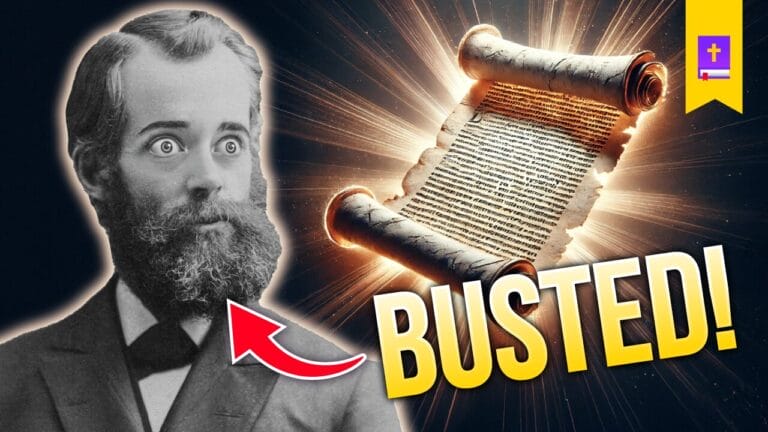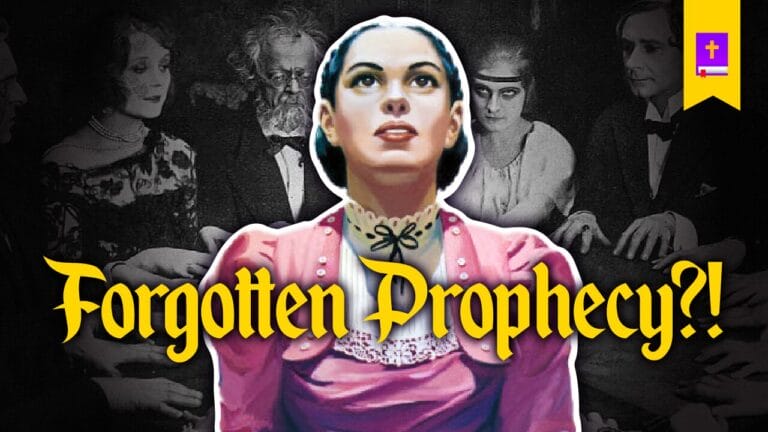The 1919 Bible Conference was a first-of-its-kind (for the SDA Movement) conference held by the Seventh-day Adventist Church from July 1 to August 9, 1919. It was headed up by A. G. Daniells—the then president of the General Conference. It was the first major discussion held by the movement surrounding the inspiration of Ellen G. White’s writings after her death in 1915, leading to quite a bit of controversy.
The minutes from the conference—which were discovered in 1975—dropped a bombshell that proved that Adventist leaders had known for over ninety years that Ellen G. White was not who she and the movements leaders purported her to be regarding her prophetic gifting. SDA historian George Knight’s A Search for Identity: The Development of Seventh-day Adventist Beliefs documents down much of the history and issues that were discussed.
It’s important to understand that this conference was taking place at a time in America where theological liberalism and conservatism (not to be confused with the political labels) had clashed and separation had happened. Theological liberalism began to embrace Darwinian evolutionary theory and saw modern scientific theory as incompatible with the Bible. This led to whatever doctrines that did not seem reasonable or scientific to be thrown by the wayside. Beliefs such as biblical inerrancy and infallibility, the resurrection, the Second Coming, the virgin birth, miracles, and the substitutionary atonement of Jesus. He was seen more as an example of what human being could become rather than as man’s substitute. The reaction to this developed what is known as fundamentalism (which looks rather different today than it did 100 years ago).
It was during the height of this hustle and bustle—which included the fundamentalist Bible Conference Movement as a whole—that the Seventh-Day Adventist movement garnered inspiration and held the 1919 Conference. Adventists were attracted to the influence of theological conservatism based on it’s similarities regarding biblicism, and the rejection of modernism and evolution.
A hot topic of the 1919 Conference included the discussion of scriptural inerrancy. Willie White, Ellen and James White’s son, documents down that it was W. W. Prescott who introduced the idea of inerrancy and plenary verbal inspiration of the Bible into Adventism during the late 1880s which White says “resulted in bringing into our work questions and perplexities without end, and always increasing.” The errors within Ellen’s writings were the source of this tension as many viewed them in equal standing with scripture.
George Knight documents that some Adventists did hold to verbal inspiration early on, but it became problematic by the late 1920s because many Adventists blanket applied their beliefs in inerrancy and inspiration of the Bible to the writings of Ellen White (The Spirit of Prophecy).
The problem came from Ellen White’s own view of scriptural inspiration which was that the men’s thoughts were inspired, not their words. God would impress upon the mind of the writer the thoughts he wanted the penman to have and they—in their own words—would write to convey successfully the idea that God wanted communicated. But the words themselves were not God’s. Interestingly enough, this quote was actually plagiarized from Dr. C. E. Stowe’s Origin and History of the Books of the Bible. Ironically, she also claimed that God would give her the words to write, though, which would mean the words were inspired based on the source from which they are coming—God.
Ellen White not only rejected verbal inspiration, though, but also the inerrancy of scripture (which is why they don’t truly affirm sola scriptura either) and thought inspiration was officially adopted by the SDA Church at the 1883 General Conference session. But this rejection of plenary verbal inspiration is what has left the door open for why Ellen White’s writings have had to have corrections made yet are supposedly coming from God. The standard of the Bible has been lowered to cleverly elevate the writings of Ellen White. If the Bible has errors and it’s God speaking, then it’s fine that Mrs. White’s writings have errors also.
Dr. George Knight documents down in his book that by the time of the 1919 Conference, President Daniells and W. W. Prescott held to the view of inspiration voted on at the 1883 General Conference. Daniells said that his view on verbal inspiration changed after seeing Ellen White rewriting multiple manuscripts of The Desire of Ages. He said there was no use in trying to talk about verbal inspiration of Mrs. White’s Testimonies, “because everybody who has ever seen the work done knows better.” The rejection of the Word of God being God breathed (2 Timothy 3:16) was rejected in favor of Ellen White’s prophetic status. And this evidenced that Adventist leadership was aware of this problem long before 1919.
The agenda for the 1919 Conference didn’t originally include the discussions around inspiration and Ellen White’s supposed prophetic gifting, but George B. Thompson is documented in the minutes saying that, “if we had always taught the truth [about Ellen White] we would not have any trouble or shock in the denomination now.” Despite a number of individuals in favor of inerrancy being applied to Mrs. White’s writings, Daniells, Prescott, and H. C. Lacey shot down the idea by differentiating her writings from scripture which they argued was inerrant. Not all parties involved saw eye to eye on this and the center of the debate revolved around the 1911 revised edition of The Great Controversy which Daniells and Prescott had a hand in revising. The problem became how would the denomination go about making revisions moving forward for newly discovered errors since she had died in 1915.
The back and forth led to the minutes of the conference initially not being published and almost a blip on the radar of history. Until in 1975 when the transcripts were discovered in the General Conference archives by Donald Yost and first published in a 1979 issue by Spectrum Magazine when a then college student, Aage Rendalen, became the source who released the minutes.










